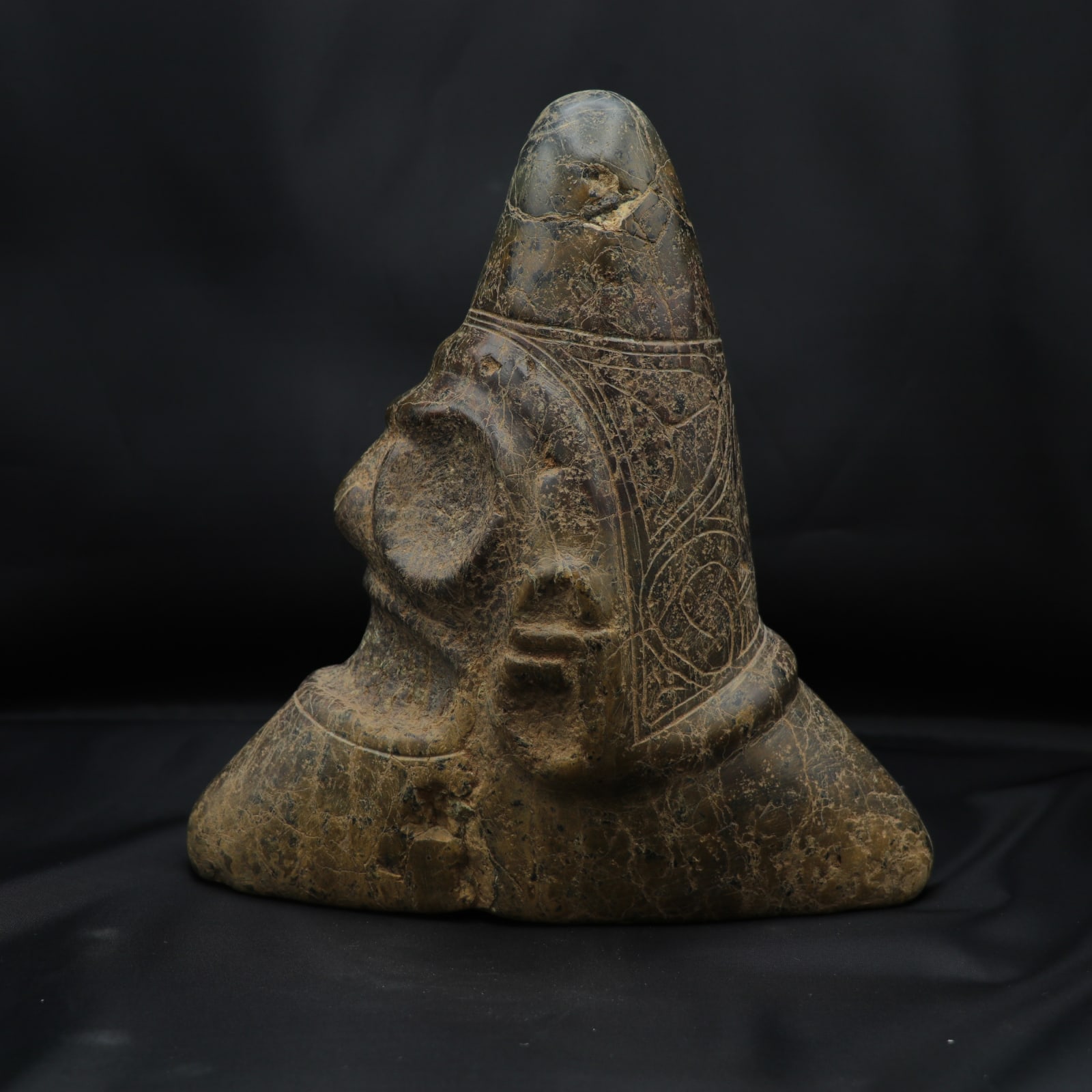Taino Stone Trigonolitos, 1000 CE - 1500 CE
Stone
26 x 23 cm
10 1/4 x 9 in
10 1/4 x 9 in
LO.1319
Three-pointers (‘trigonolitos’) were triangular-shaped stones that played a central role in the religious culture of the Taino. Flourishing in the Caribbean c.1200-1500, these communities were the first to be seriously...
Three-pointers (‘trigonolitos’) were triangular-shaped stones that played a central role in the religious culture of the Taino. Flourishing in the Caribbean c.1200-1500, these communities were the first to be seriously affected by Spanish colonists in the late fifteenth century. The destruction brought about by the settlers makes the reconstruction of the Taino way of life problematic but not impossible. Hereditary chieftains (caciques) ruled over agricultural communities who were also skilled navigators and canoeists. Religiously, the Taino worshipped a variety of deities, or zemis, who were believed to control the elements. The most important were the supreme god or creator called Yucahu Maorocoti and a fertility goddess called Attabeira. Ancestor worship was also fundamental and chieftains were often deified after their death. Crucially, the Taino believed in the existence of an afterlife and the bones of deceased ancestors were treated with veneration. Although burial practices seem to have differed from island to island, Spanish records testify that bones were often hung in gourds from the rafters of Taino dwellings. This type of practice may account for the emphasis on skeletal forms that is evident across the whole spectrum of Taino art.
This carving is a case in point, featuring a skull-like face with a protruding forehead, deep eye-sockets and a small nose. The proportions of the face are deliberately manipulated and dominated by the wide grimacing mouth/jaw. The protruding ear-like sections are deeply carved and geometric in form. In contrast, the symmetrical geometric designs on the reverse are very lightly incised, and consist of four coils set around an irregular oval. This type of motif may recall Taino textiles or tattoos worn by high status individuals. The stone itself is particularly fine, of a dark brown/green hue with black flecks. The central point of the triangular form is unusually tall in relation to the rest of the piece. Although there have been many hypotheses as to the meaning of this shape, it clearly has some association with power and/or fertility. Columbus himself gives an eye-witness account to this affect, 'Equally the majority of caciques (chiefs) have three stones to which they and their people have great devotion. One they say is for the fertility of the grain and vegetables that they grow; the next for mothers to give birth without pain, and the third for the water and sun when they have need.’ Although quite a large number of three-pointers have survived owing to the durability of the material, it is hard to find examples of such quality and expression.
This carving is a case in point, featuring a skull-like face with a protruding forehead, deep eye-sockets and a small nose. The proportions of the face are deliberately manipulated and dominated by the wide grimacing mouth/jaw. The protruding ear-like sections are deeply carved and geometric in form. In contrast, the symmetrical geometric designs on the reverse are very lightly incised, and consist of four coils set around an irregular oval. This type of motif may recall Taino textiles or tattoos worn by high status individuals. The stone itself is particularly fine, of a dark brown/green hue with black flecks. The central point of the triangular form is unusually tall in relation to the rest of the piece. Although there have been many hypotheses as to the meaning of this shape, it clearly has some association with power and/or fertility. Columbus himself gives an eye-witness account to this affect, 'Equally the majority of caciques (chiefs) have three stones to which they and their people have great devotion. One they say is for the fertility of the grain and vegetables that they grow; the next for mothers to give birth without pain, and the third for the water and sun when they have need.’ Although quite a large number of three-pointers have survived owing to the durability of the material, it is hard to find examples of such quality and expression.



